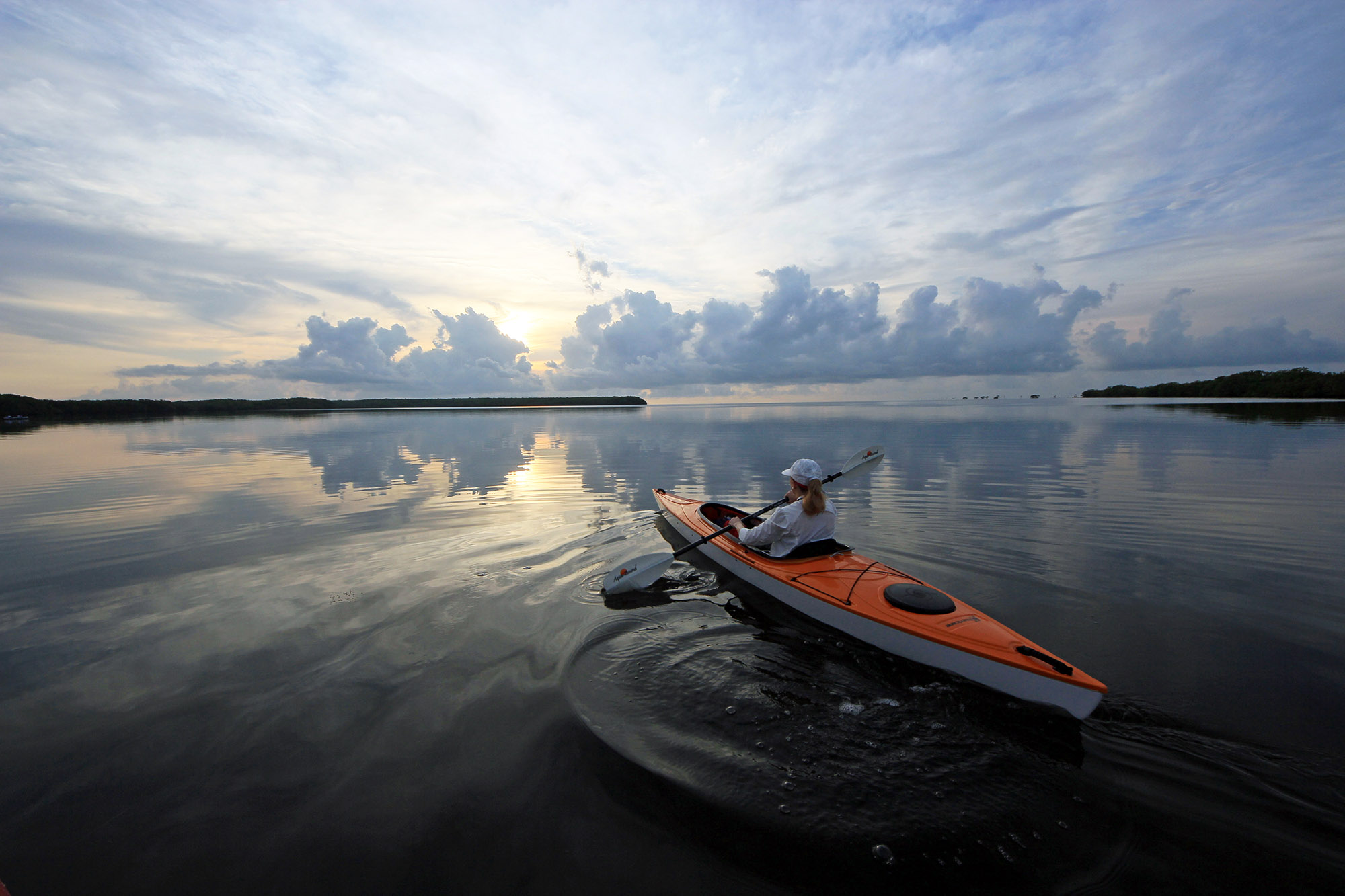These days, scoring a backpacking permit or campground in the country’s most popular national parks can feel like a chore — and that’s if you’re lucky enough to get one at all.
But conventional park visits aren’t the only option. It’s also possible to explore less-visited national parks via waterways, allowing you to skip most of the traffic and crowds. So, we’re looking at these seven national parks that are best enjoyed by kayak, canoe, or SUP board.
These parks, spread across the country from Florida to Washington, also have some of the lowest visitation numbers in the park system — partly because many of them are only accessible via a boat or ferry.
If you’ve got a boat or a canoe, then you’ve got a one-way ticket to snorkeling coral reefs, fishing for lobster, and seeing the Northern Lights up close. And if you don’t own one, you can always rent one and still have fun on the water this summer.
Check out our list of boat-friendly national parks below, along with plenty of tips for making the most of your trip.
Isle Royale National Park, Michigan
Located in Lake Superior between Minnesota and Michigan’s Upper Peninsula, Isle Royale National Park is a true escape. It’s a lush, remote island that feels worlds away from ordinary life. To get there, you’ll need to travel by seaplane, ferry, or private boat.
Camping
Boaters are welcome to stay overnight at more than 20 docks and boat-in campgrounds. Most sites have a limit on how many nights you can stay consecutively, and all are first-come, first-served. Any overnight stay with a boat requires a permit.
If kayaking and canoeing are more your speed, ferries allow customers to bring their vessels along with them. From there, it’s possible to paddle around the island, staying at campgrounds that dot the shore.
Fishing
When the NPS describes a park as “an angler’s paradise,” you know the fishing has to be good. Isle Royale is full of multiple varieties of trout. Be sure to acquire a fishing license from the Michigan Department of Natural Resources.
Channel Islands National Park, California
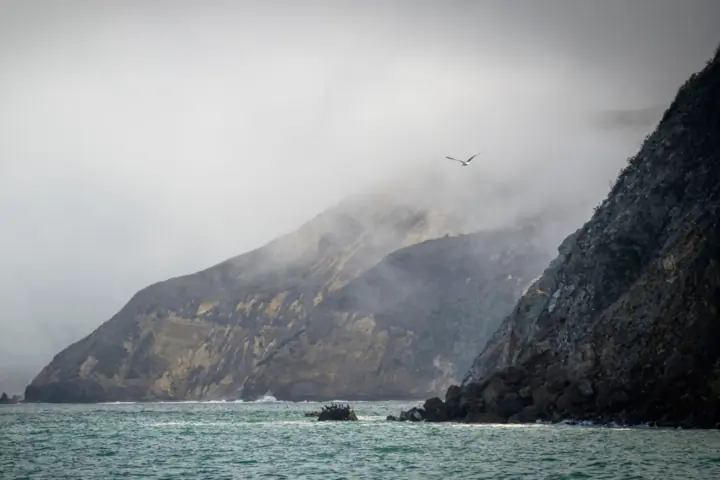
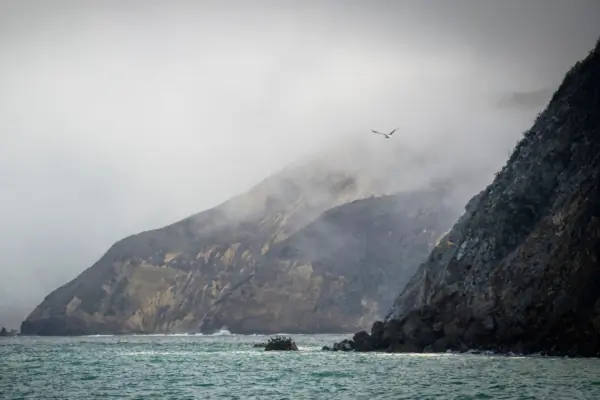
Channel Islands National Park, a series of five islands off the coast of southern California, is known for its stunning ocean views and rugged coastlines.
The park is only accessible by public ferry or private boat. Once you arrive on the islands, there is no transportation available, making a kayak or boat essential in order to enjoy the entirety of the park.
Camping
Only one of the five islands, Santa Cruz Island, requires a permit to dock. Each island has a designated campground, which are reservable and require anywhere from a 0.25- to 1-mile walk from the dock, so be sure to pack light.
Best Hikes
Take in each island and its idyllic oceanic setting from a wide selection of trails. For an easy loop, try the Cavern Point trail on Santa Cruz Island, a 2-mile hike that offers a great vantage point for whale watching. The Water Canyon Beach Hike on Santa Rosa Island is a flat, 3-mile walk that takes you along the island’s pristine white sand beach.
Be Animal-Aware
Visitors to Anacapa Island, be warned: From April to mid-August, western gulls nest on the island, which can produce “guano, strong odor, constant noise, bird carcasses, and birds protecting their territory,” according to the NPS.
Stay mindful of food storage. Due to the presence of foxes and ravens that have a knack for getting into zippers, food storage boxes are provided at campgrounds.
Voyageurs National Park, Minnesota
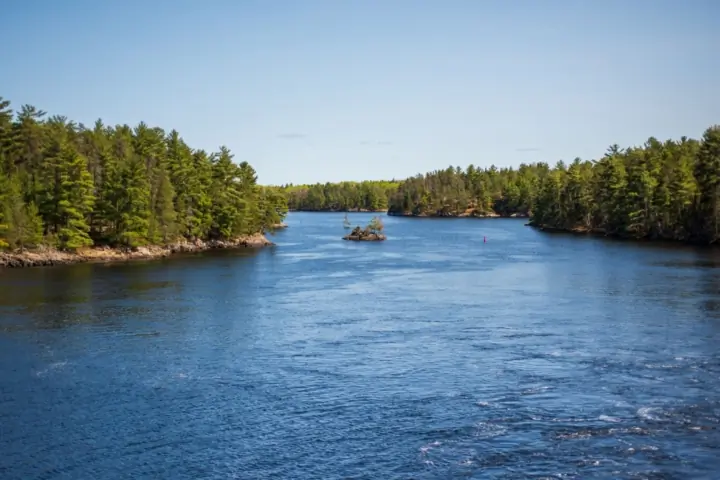
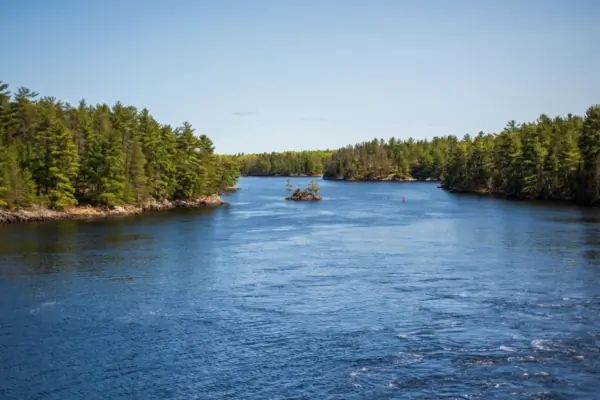
A watercraft is a must-have to fully explore and appreciate Voyageurs National Park, a vast 218,000-acre area of lakes, forests, and streams in northern Minnesota. The park is an excellent place to try to get a glimpse of the famed Northern Lights as they dance across the night sky.
Camping
The park is home to 157 frontcountry campsites, which are only accessible via boat, canoe, or kayak. It’s possible to plot out a customizable itinerary, paddling from site to site. Camping requires a permit, which is available online.
If you’re looking for even more of a remote experience, try hiking among the park’s 14 backcountry campsites. You can get a water taxi to your start point, and then hike between campsites.
Some backcountry sites are only accessible by canoes, which are provided with your permit when you reserve the site. These sites are located in a series of interior lakes on the Kabetogama Peninsula. This heavily wooded area turns into a bright rainbow of stunning foliage in the fall.
Fishing
Given that 40% of Voyageurs’ total area is water, it’s unsurprising that it’s well-known as a fishing destination. Common species include walleye, smallmouth bass, northern pike, and yellow perch. Anglers must acquire a Minnesota fishing license and follow the state’s regulations.
Dry Tortugas National Park, Florida
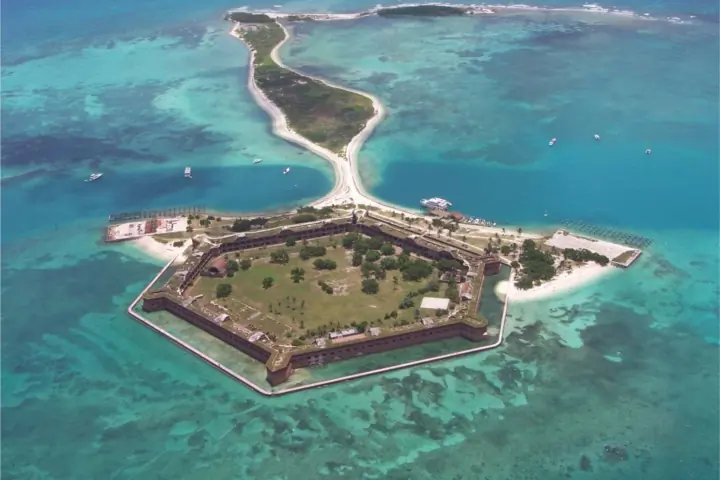
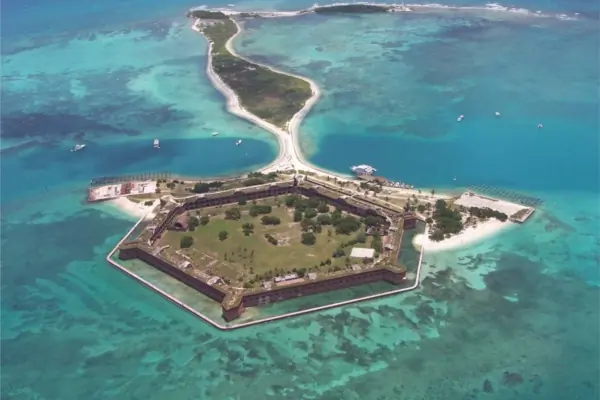
Located 70 miles from Key West, Dry Tortugas is one of the nation’s most remote parks, but after one visit, you’ll be glad you made the trek. Less than 1% of the park’s area is dry land, so a boat is a must-have. Visitors can get to the islands via seaplane, ferry, or private boat.
Camping
Campsites are available only at Garden Key. Sites are first-come, first-served. However, the NPS guarantees space to all campers who arrive through a designated overflow area. This campground is the only place on the island that allows overnight docking of private boats.
Things to Do
Dry Tortugas’ Garden Key island is home to Fort Jefferson, a military outpost built in the 19th century to protect against piracy. Guests can tour and explore the structure, which is the largest brick masonry building in the Americas.
Coral reefs full of diverse marine life are one of the park’s highlights, and swimming and snorkeling are popular activities. Dive in and swim alongside sea turtles, colorful reef fishes, and whale sharks.
Loggerhead Key has a designated swimming area that is calm and shallow, with coral formations close to shore. Kayaking or paddleboarding between keys is a great way to explore multiple areas and find beaches you can enjoy all to yourself.
North Cascades National Park, Washington
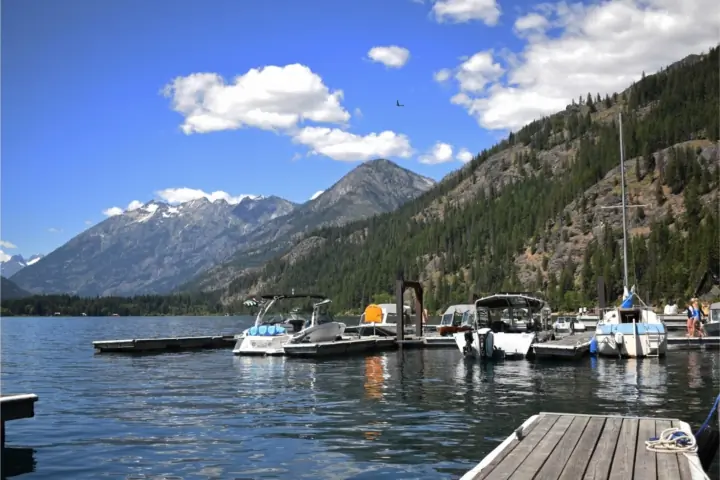
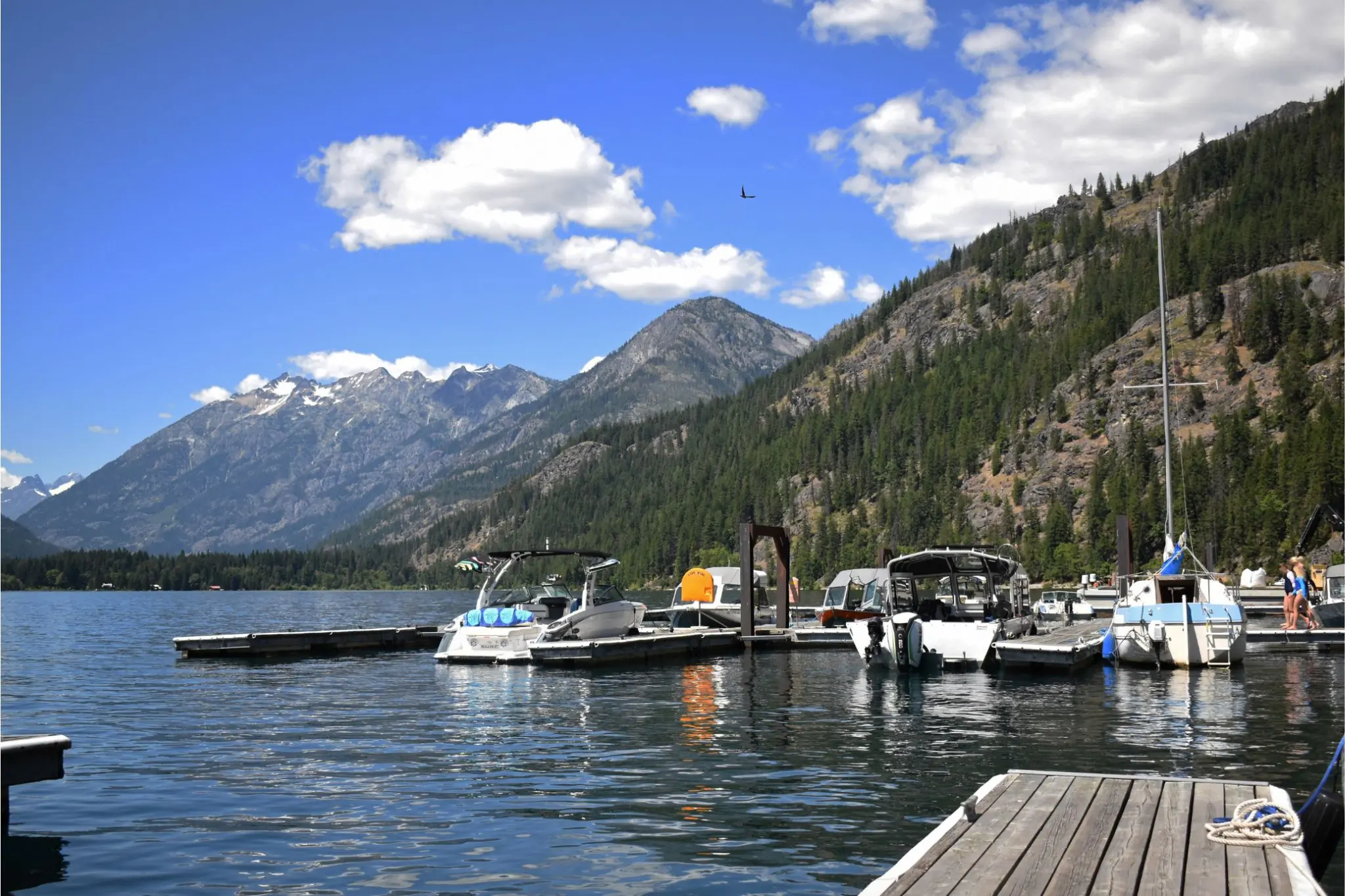
North Cascades National Park’s Stehekin Valley is home to Lake Chelan, the third-deepest lake in the United States. If you’re looking for true peace and quiet, this is the park for you. In 2024, it was the second-least-visited national park, with just over 16,000 visitors.
The only way to access the Stehekin area is by foot, ferry, horseback, or private boat. The lake has 16 public docks, all of which require a $10 daily permit. Canoeing and kayaking are popular activities as well, but visitors should note that personal watercraft, like jet skis, are not permitted.
Camping
In addition to backcountry camping, there are three boat-in camping areas on Lake Chelan. The 19 sites are all first-come, first-served. Dock at Weaver Point, and use it as a base to explore the area’s many hiking trails, including the Stehekin River Trail to Rainbow Falls, a 300-foot waterfall.
A Must-See
Visitors to Stehekin Valley shouldn’t miss the chance to visit Buckner Orchard, a 10-acre working apple orchard that began as a homestead in 1911. It’s possible to pick apples in the late summer and early fall, and the property hosts square dances, live music, and an annual Harvest Fest in August.
Biscayne Bay National Park, Florida
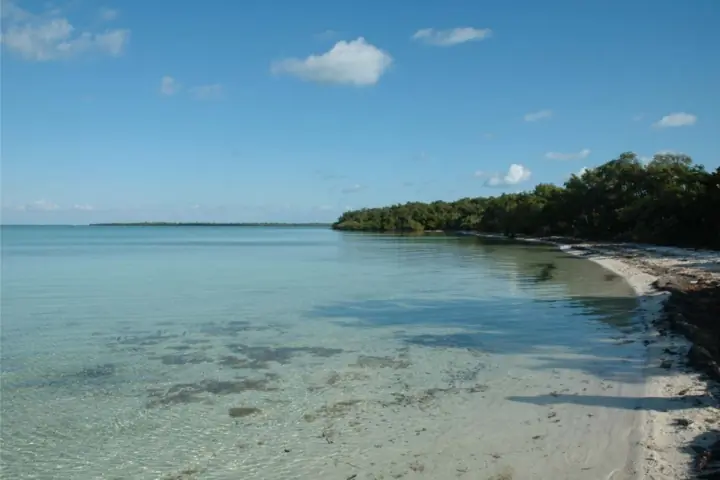
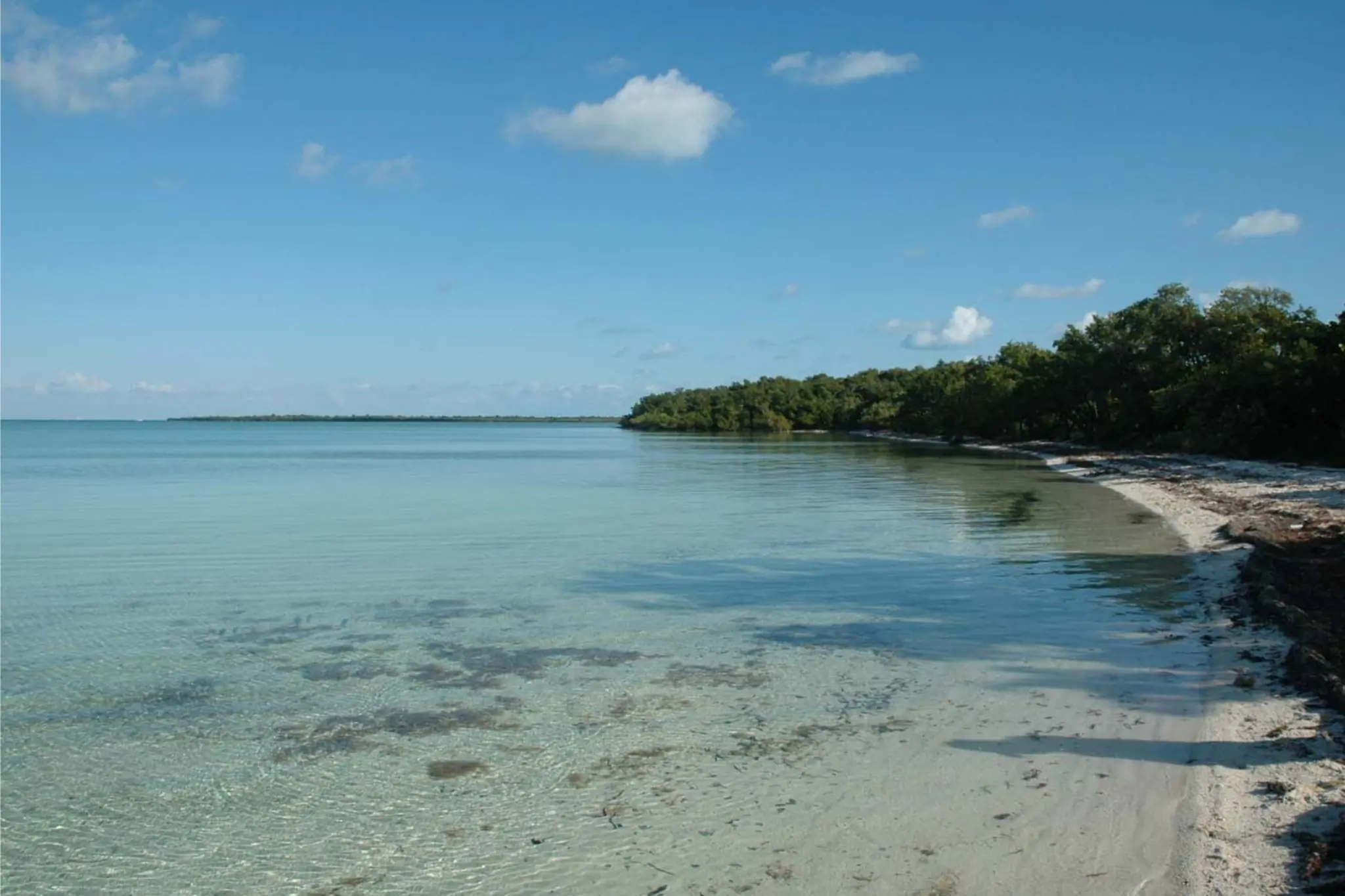
Biscayne Bay National Park is only 35 miles away from Miami, but it provides a welcome respite from the busy city. Explore vibrant coral reefs that are home to more than 500 species of fish, as well as lush, jungle-like mangrove forests. The park is 95% water, making it an ideal choice for a boat-based getaway.
Camping
The park’s two campgrounds are located on Boca Chita Key and Elliott Key. Both are only accessible via boat, and both are first-come, first-served. There are no services on these islands, but the campgrounds do have restrooms, grills, and picnic tables.
Highlights
Due to the shallow water and a high incidence of hurricanes, this part of the coast has been the site of many shipwrecks. It’s possible to snorkel and view the remnants of these historical ships with the park’s Maritime Heritage Trail.
Birding is another popular activity. Visitors can tour the Biscayne Birding Trail to spot a whole host of shorebirds, migratory warblers, and wading birds.
Fishing
To preserve fragile coral reefs and prevent damage from anchors, boats are required to use the provided mooring buoys when out on the water. All fishing requires a license from the Florida Fish and Wildlife Conservation Commission. Popular catches include spiny lobster, bonefish, snapper, redfish, and multiple species of grouper.
Congaree National Park, South Carolina
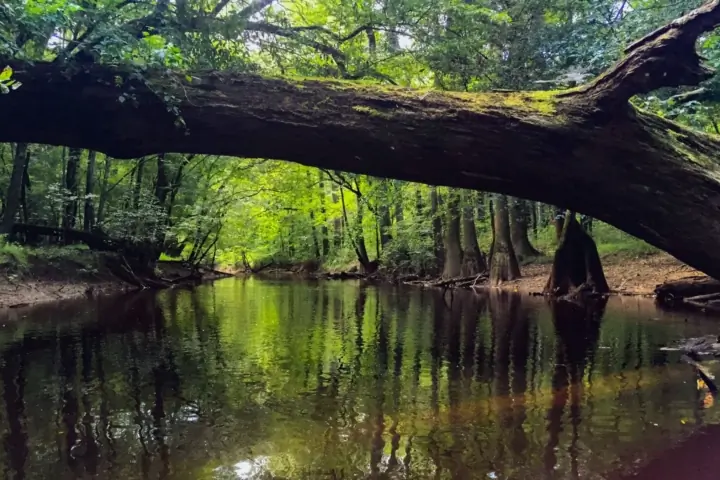
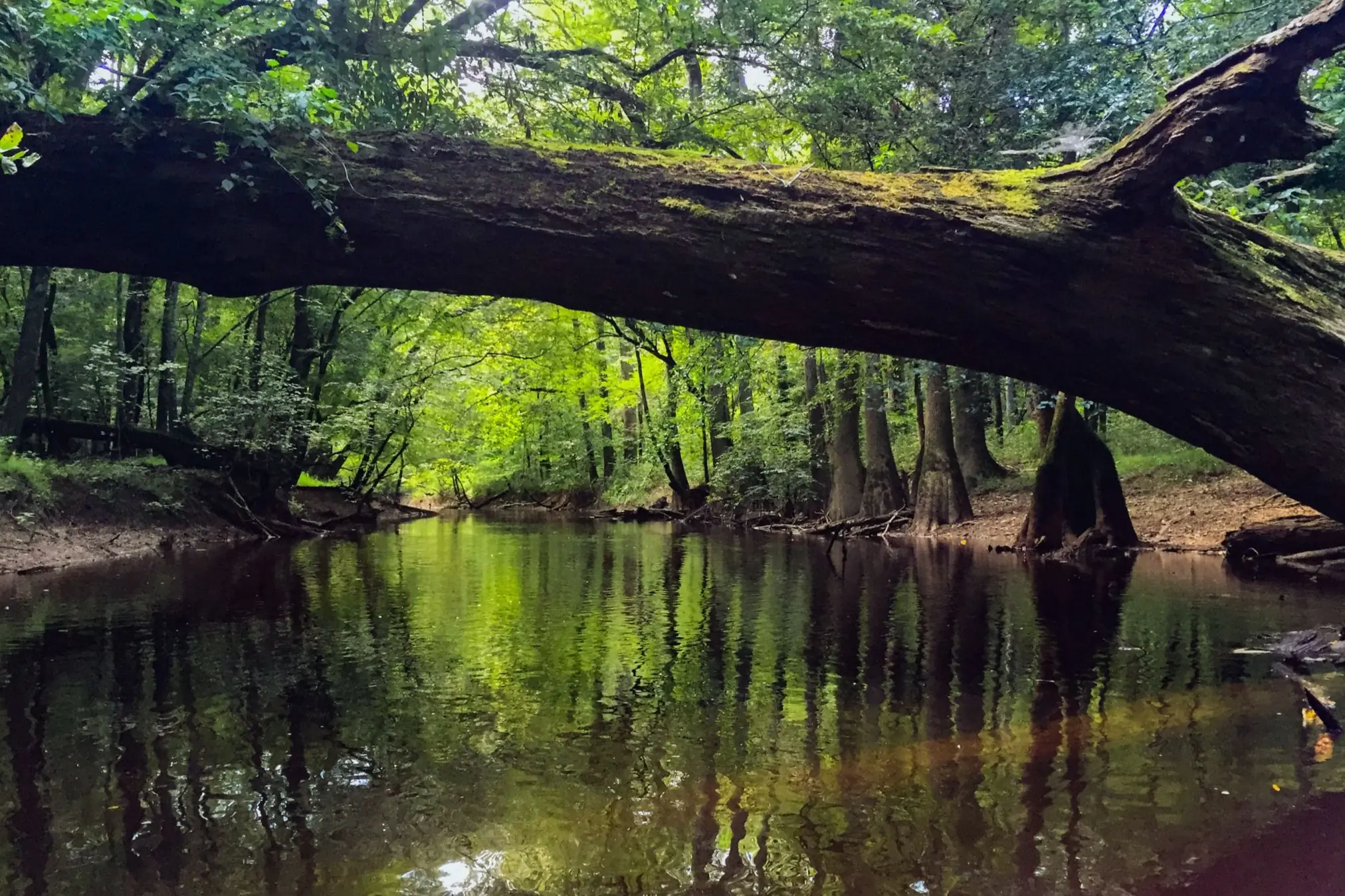
Congaree National Park, located about a 30-minute drive from Columbia, S.C., is one of the Southeast’s largest bottomland hardwood forests and an area rich in biodiversity. Its many rivers and lakes make it an aquatic oasis perfect for exploration by canoe or kayak.
Canoe Trails
The park has multiple itineraries for canoe trips ranging in length from a few hours to a few days. The 50-mile Congaree River Blue Trail takes paddlers across almost the entire expanse of the park.
Dispersed backcountry camping on sandbars is allowed with a permit. Paddling along the river gives visitors the best chances of seeing wildlife like turtles, eagles, and otters.
Fishing
As long as anglers are 25 feet away from any manmade structure, they can fish anywhere in Congaree National Park. Visitors should obtain a South Carolina fishing license and follow all stated regulations. Motorized boats are not allowed in the park, so canoes and kayaks are a necessity. Common species include striped bass, black crappie, yellow perch, and channel catfish.
Read the full article here




